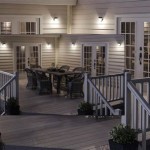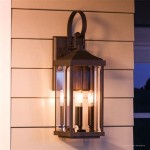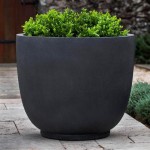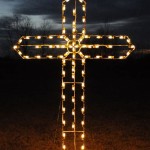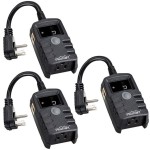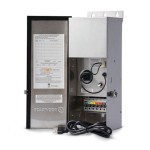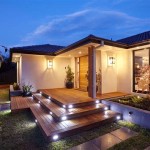Illuminating Your Outdoor Oasis: A Guide to Outdoor Dining Area Lighting Designs
Outdoor dining areas offer a unique opportunity to extend living spaces and enjoy meals al fresco. However, the ambiance and functionality of these spaces are heavily reliant on effective lighting. Thoughtful outdoor dining area lighting designs can transform a simple patio into a captivating and inviting environment suitable for intimate gatherings or larger celebrations. This article will explore various lighting design principles and practical applications to enhance the outdoor dining experience.
Understanding the Fundamentals of Outdoor Lighting
Before delving into specific lighting designs, it is crucial to understand the fundamental principles that underpin successful outdoor illumination. These principles address safety, functionality, and aesthetics, all of which contribute to a well-lit and enjoyable outdoor dining area. A core element is layering light, which involves combining different types of light sources to achieve a balanced and visually appealing effect. This prevents harsh shadows and creates depth within the space. Another key consideration is the color temperature of the light. Warmer light (around 2700-3000K) is generally preferred for dining areas as it creates a cozy and inviting atmosphere, while cooler light (above 4000K) can feel stark and less conducive to relaxation. Finally, it is important to consider the durability and weather resistance of outdoor lighting fixtures. Investing in fixtures specifically designed for outdoor use ensures longevity and safety.
Layering light is a technique used by lighting designers to create a balanced and visually interesting lighting scheme. It involves incorporating ambient lighting, task lighting, and accent lighting. Ambient lighting provides overall illumination to the space, ensuring safe movement and visibility. Task lighting focuses on specific areas, such as the dining table, providing sufficient light for eating and conversation. Accent lighting highlights architectural features, landscaping, or decorative elements, adding depth and visual interest to the overall design. Combining these three types of lighting creates a dynamic and inviting atmosphere.
The color temperature of light is measured in Kelvin (K) and refers to the warmth or coolness of the light emitted by a bulb or fixture. Warmer light, with a lower Kelvin rating, produces a yellowish or amber hue, creating a cozy and relaxing ambiance. Cooler light, with a higher Kelvin rating, produces a bluish or white hue, which can feel more energetic and stimulating. For outdoor dining areas, warmer light is generally preferred as it enhances the atmosphere and creates a sense of intimacy. However, the specific color temperature chosen should also complement the surrounding landscape and architectural style.
Outdoor lighting fixtures are exposed to the elements, including rain, snow, sunlight, and extreme temperatures. Therefore, it is essential to select fixtures that are specifically designed for outdoor use and are rated for weather resistance. Look for fixtures with a high Ingress Protection (IP) rating, which indicates the level of protection against solid objects and liquids. Fixtures with a rating of IP65 or higher are generally suitable for outdoor use, as they can withstand rain and splashes of water. Additionally, consider the materials used in the construction of the fixtures. Durable materials such as stainless steel, aluminum, and brass are more resistant to corrosion and weathering.
Exploring Different Lighting Fixture Options
The market offers a diverse range of lighting fixtures suitable for outdoor dining areas, each with its own unique characteristics and applications. Choosing the right fixtures is crucial for achieving the desired ambiance and functionality. Common options include string lights, pendant lights, pathway lights, spotlights, and wall sconces. Each type of fixture provides a distinct lighting effect and can be used to create different moods and highlight specific features.
String lights are a popular choice for outdoor dining areas due to their versatility and festive appeal. They can be strung across patios, pergolas, or trees, creating a warm and inviting atmosphere. String lights are available in a variety of styles, including globe lights, fairy lights, and Edison-style bulbs. They are relatively inexpensive and easy to install, making them a great option for adding a touch of ambiance to any outdoor space. When selecting string lights, consider the bulb type, spacing, and overall length. LED string lights are more energy-efficient and long-lasting than traditional incandescent bulbs.
Pendant lights are typically suspended from a ceiling or overhang, providing focused illumination over a dining table or seating area. They can add a touch of elegance and sophistication to an outdoor dining space. Pendant lights are available in a wide range of styles, from modern and minimalist to rustic and traditional. When choosing pendant lights for outdoor use, ensure that they are rated for wet locations and are made from durable materials. Consider the size and scale of the pendant lights in relation to the size of the dining table and the overall space.
Pathway lights are designed to illuminate walkways and pathways, providing safety and visibility. They can also be used to highlight landscaping features and add a touch of ambiance to the outdoor dining area. Pathway lights are available in a variety of styles, including bollard lights, stake lights, and recessed lights. When selecting pathway lights, consider the height, spacing, and light output. Lower-level pathway lights are ideal for creating a subtle and guiding light, while taller bollard lights can provide more substantial illumination.
Spotlights are used to focus light on specific objects or areas, such as architectural features, sculptures, or plants. They can add drama and visual interest to the outdoor dining area. Spotlights are available in a variety of sizes and wattages, allowing for precise control over the amount of light directed onto a specific area. When using spotlights, be mindful of light trespass and avoid directing light onto neighboring properties.
Wall sconces are mounted on walls or posts, providing both ambient and accent lighting. They can add a touch of elegance and sophistication to an outdoor dining area. Wall sconces are available in a wide range of styles, from traditional lantern sconces to modern and minimalist designs. They can be used to illuminate pathways, entryways, or outdoor kitchens. When selecting wall sconces for outdoor use, ensure that they are rated for wet locations and are made from durable materials.
Designing for Functionality and Aesthetics
A successful outdoor dining area lighting design must consider both functionality and aesthetics. The lighting should provide sufficient illumination for dining and conversation while also creating a visually appealing and inviting atmosphere. This requires careful planning and attention to detail. Key considerations include the layout of the space, the desired ambiance, and the architectural style of the home.
The layout of the outdoor dining area plays a crucial role in determining the appropriate lighting design. Consider the location of the dining table, seating areas, and any other features, such as an outdoor kitchen or bar. The lighting should be tailored to the specific needs of each area. For example, the dining table may require focused task lighting, while seating areas may benefit from softer ambient lighting. Pathways leading to the dining area should be well-lit to ensure safety and ease of navigation.
The desired ambiance is another important consideration when designing outdoor dining area lighting. Do you want to create a romantic and intimate setting, or a more lively and festive atmosphere? The lighting should reflect your personal preferences and the overall style of your home. Dimmer switches can be used to adjust the light levels and create different moods. Warm-toned lighting is generally preferred for creating a cozy and inviting atmosphere, while cooler-toned lighting can be used to create a more modern and sophisticated look.
The architectural style of the home should also be taken into account when selecting outdoor lighting fixtures. The fixtures should complement the style of the home and blend seamlessly with the surrounding landscape. For example, a traditional home may benefit from classic lantern sconces, while a modern home may be better suited to sleek and minimalist fixtures. Consider the materials, finishes, and shapes of the fixtures to ensure that they are consistent with the overall design aesthetic.
Effective outdoor dining area lighting designs can significantly enhance the enjoyment and functionality of outdoor living spaces. By understanding the principles of lighting, exploring the various fixture options, and considering the specific needs of the space, homeowners can create a captivating and inviting environment suitable for dining, entertaining, and relaxing.

Stretch Your Time Outdoors On A Deck Or Patio Add After Dark Drama To Home S Front Entry With Mix Of Outdoor Lights Choose From Garden And String

21 Best Outdoor Lighting Ideas Easy Patio

Glowing Gatherings 25 Covered Patio Lighting Concepts Lightopia

18 Outdoor Lighting Ideas To Make Your Garden Glow Gathered

8 Outdoor Kitchen Lighting Ideas Angi

10 Best Outdoor Lighting Ideas Landscape Design Secrets

Patio String Lighting Ideas For Dining Spaces Love Your Lights

Outdoor Kitchen Design Lanchester Grill Hearth

Pergola Lighting Ideas

Creative Patio Lighting Ideas To Enhance Your Outdoor Space Triangle Gardener
Related Posts
